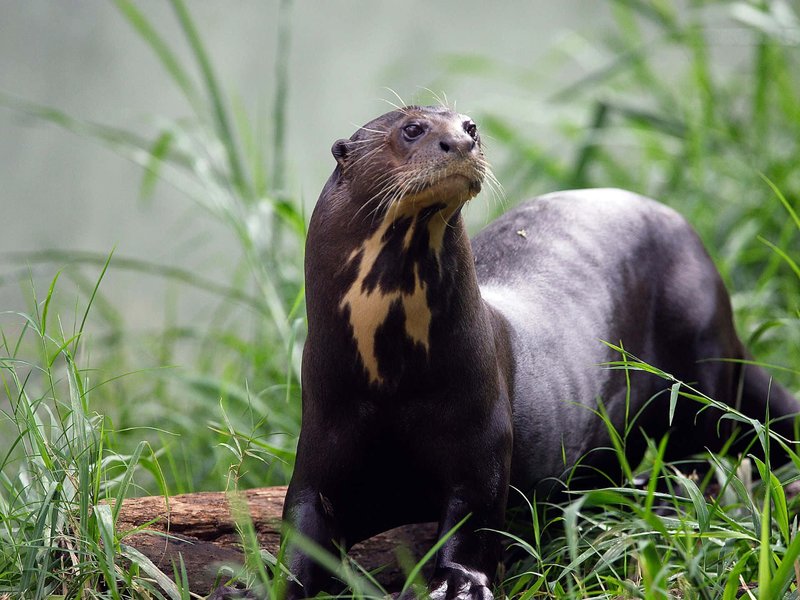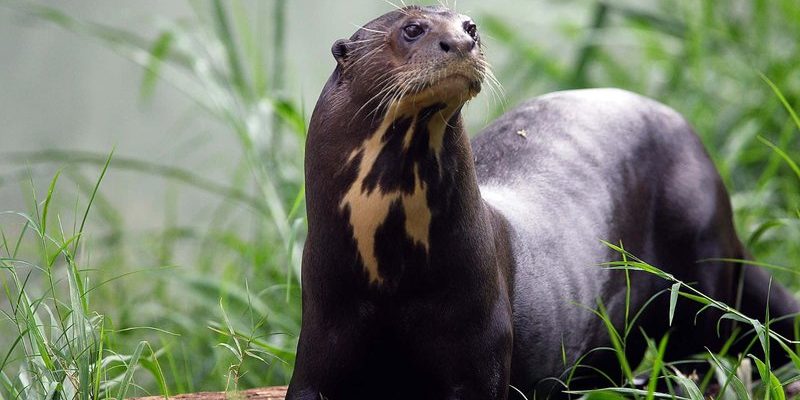
Picture this: you’re at a cozy café with a friend, and you start chatting about wildlife. You mention the giant otter, and suddenly your friend launches into a tale that’s partly fact, partly fiction. That’s how easily myths can spread! Each of these tales can lead us to misunderstand just how remarkable these animals are. So, let’s dive into some of the common myths about giant otters and set the record straight, shall we?
Myth 1: Giant Otters Are Dangerous to Humans
You might have heard that giant otters can be aggressive and pose a threat to humans. Here’s the thing, while giant otters are certainly protective of their territory and family groups, they are generally not dangerous.
These creatures are social, living in groups called families or rafts—imagine a close-knit crew working together to hunt and play. They primarily hunt fish, crustaceans, and small mammals, and their diet doesn’t include humans. Aggression usually occurs only when they feel threatened. So, if you encounter a giant otter in the wild, just keep your distance and observe from afar. They’d much rather swim away than confront you.
It’s important to remember that they are more interested in scaring you off than actually attacking. They’ll make loud warning calls to alert their family and deter perceived threats. If you respect their space, you’ll likely witness their playful side instead of the overly dramatic image people often paint.
Myth 2: Giant Otters Are Solitary Creatures
Another common misconception is that giant otters live alone. This couldn’t be further from the truth! In fact, they are very much a social species. They enjoy the company of their family units, often consisting of a mother, her pups, and sometimes even older siblings.
Picture a family reunion playing out on the riverbanks. These otters work together to hunt, groom, and even play! They communicate with each other using a variety of sounds, like growls and whistles, which adds to their social charm. You might catch them sliding into the water from the banks, chasing each other playfully.
Living in groups has its advantages. Not only does it make hunting easier, but it also offers protection against predators. So, next time you think of giant otters, remember, they thrive on companionship!
Myth 3: Giant Otters Are in Decline Due to Climate Change Alone
You might think that the primary reason for giant otters’ decline is climate change. While environmental shifts undoubtedly affect their habitats, it’s not the only culprit. The truth is, habitat destruction, pollution, and poaching have played significant roles in their decline as well.
As humans continue to expand farmland and urban areas, their natural habitas, especially in the Amazon rainforest, are shrinking. This forces giant otters into smaller territories, leading to overcrowding and competition for food. Additionally, water pollution can impact their food sources, affecting both their health and the ecosystems they rely on.
Conservation efforts are crucial for their survival. Local initiatives that focus on protecting habitats and clarity in waterways are just as important as addressing climate change. By understanding all factors involved, we can better support these amazing creatures.
Myth 4: Giant Otters Have an Easier Life Than Other Otters
Some might assume that being a giant otter means an easier life, but that’s a misconception. Sure, they are larger than their relatives, but that doesn’t mean they face fewer challenges. In fact, their size can sometimes be a disadvantage in the wild.
For starters, hunting and navigating through dense vegetation can be trickier for a larger animal. They rely heavily on teamwork to catch their prey and often need to work harder than smaller otter species to find food. Plus, their larger size makes them more visible to potential predators, which can include jaguars and caimans.
Each day for a giant otter can involve rigorous hunting, social interactions, and territorial defense. Their lives might seem like a smooth ride from the surface, but beneath the surface, there’s a lot more going on.
Myth 5: Giant Otters Only Live in the Amazon Rainforest
Many people associate giant otters exclusively with the Amazon rainforest, but they actually have a broader range. These otters can be found in various freshwater habitats across South America, including rivers, lakes, and wetlands beyond the Amazon.
While the Amazon is a hotbed for their population, they also thrive in regions like the Pantanal in Brazil, which is one of the world’s largest tropical wetlands. This habitat diversity is essential for their survival, providing ample food sources and protection.
The adaptability of giant otters in different environments highlights their resilience, but it also means that we need to conserve various habitats to maintain their population. So, while the Amazon is certainly iconic for giant otters, it’s just one part of their journey.
Myth 6: Giant Otters Are Just Big Versions of Regular Otters
People often lump giant otters in with other otter species, assuming they’re simply larger versions of regular otters. In reality, they’re a distinct species with unique behaviors and social structures.
Giant otters have specific adaptations that help them thrive in their environments. For instance, their long, streamlined bodies are perfect for swimming through water, while their webbed feet make them agile swimmers. They also have denser fur, which provides insulation in cooler water, setting them apart from their smaller relatives.
Moreover, their social behavior is quite different, focusing more on family units and pack hunting. Each species of otter brings something special to the ecosystem, and understanding the differences can help us appreciate their unique roles.
Myth 7: Giant Otters Are Always Playful
While it’s easy to picture giant otters as the playful jokers of the animal kingdom, they also have serious moments. Their reputation for playfulness can overshadow their more cautious nature.
In the wild, they need to be vigilant against threats, which means not every moment is spent frolicking. They can be quite serious when it comes to defending their territory or hunting for food. Play and joviality often occur in safe environments where they feel comfortable, like within their family group.
Understanding this balance between play and caution can deepen our appreciation for their lives. They are not just entertainers; they’re survivalists, too.
In conclusion, giant otters are remarkable creatures with lots of myths surrounding them. By debunking these misconceptions, we can foster a better understanding of their lives and the challenges they face. Whether you’re encountering these magnificent animals in the wild or learning about them from afar, it’s vital to approach them with respect and knowledge. So, the next time someone mentions giant otters, you’ll be ready to share a more accurate story.

